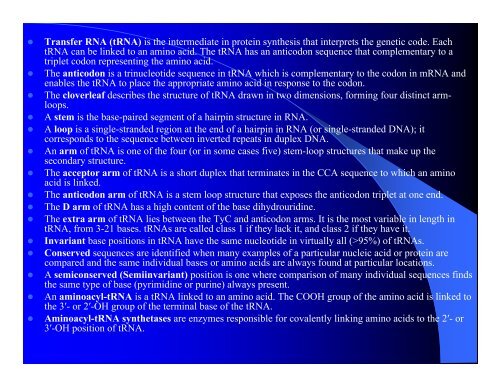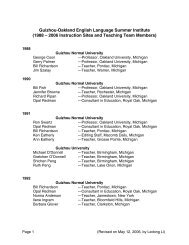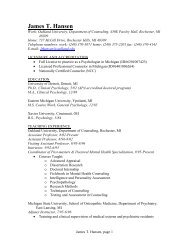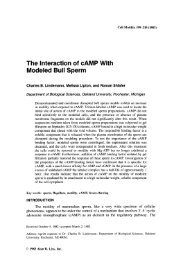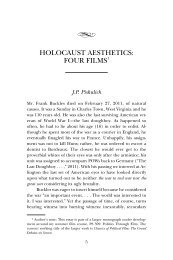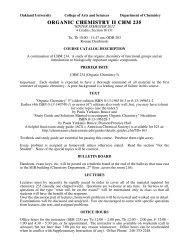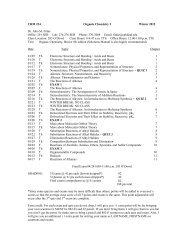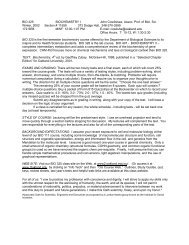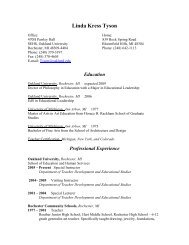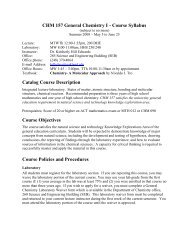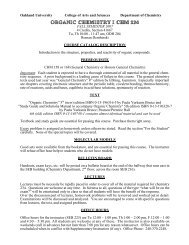mRNA Chapter 5
mRNA Chapter 5
mRNA Chapter 5
Create successful ePaper yourself
Turn your PDF publications into a flip-book with our unique Google optimized e-Paper software.
• Transfer RNA (tRNA) is the intermediate in protein synthesis that interprets the genetic code. Each<br />
tRNA can be linked to an amino acid. The tRNA has an anticodon sequence that complementary to a<br />
triplet codon representing the amino acid.<br />
• The anticodon is a trinucleotide sequence in tRNA which is complementary to the codon in <strong>mRNA</strong> and<br />
enables the tRNA to place the appropriate amino acid in response to the codon.<br />
• The cloverleaf describes the structure of tRNA drawn in two dimensions, forming four distinct armloops.<br />
• A stem is the base-paired segment of a hairpin structure in RNA.<br />
• A loop is a single-stranded region at the end of a hairpin in RNA (or single-stranded DNA); it<br />
corresponds to the sequence between inverted repeats in duplex DNA.<br />
• An arm of tRNA is one of the four (or in some cases five) stem-loop structures that make up the<br />
secondary structure.<br />
• The acceptor arm of tRNA is a short duplex that terminates in the CCA sequence to which an amino<br />
acid is linked.<br />
• The anticodon arm of tRNA is a stem loop structure that exposes the anticodon triplet at one end.<br />
• The D arm of tRNA has a high content of the base dihydrouridine.<br />
• The extra arm of tRNA lies between the TyC and anticodon arms. It is the most variable in length in<br />
tRNA, from 3-21 bases. tRNAs are called class 1 if they lack it, and class 2 if they have it.<br />
• Invariant base positions in tRNA have the same nucleotide in virtually all (>95%) of tRNAs.<br />
• Conserved sequences are identified when many examples of a particular nucleic acid or protein are<br />
compared and the same individual bases or amino acids are always found at particular locations.<br />
• A semiconserved (Semiinvariant) position is one where comparison of many individual sequences finds<br />
the same type of base (pyrimidine or purine) always present.<br />
• An aminoacyl-tRNA is a tRNA linked to an amino acid. The COOH group of the amino acid is linked to<br />
the 3′- or 2′-OH group of the terminal base of the tRNA.<br />
• Aminoacyl-tRNA synthetases are enzymes responsible for covalently linking amino acids to the 2′- or<br />
3′-OH position of tRNA.


